
Source: Aya 彩 (@kanzashi1616)
Twitter users show off their non-standard “spirit animal” displays for Obon Festival
- Tags:
- Obon / shōryōuma / spirit animals / Tsumami zaiku
Related Article
-
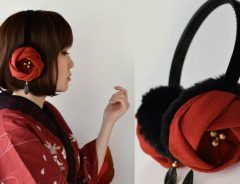
Japanese Maker Uses Age-Old Craft For Elegant Earmuffs To Pair With Kimono
-
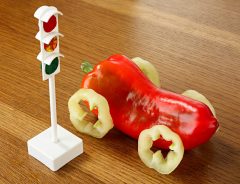
Honda carves impressive veggie vehicles to transport spirits of ancestors during Obon season
-

Japanese artist’s simple obon holiday illustration has cat lovers around the world in tears
-
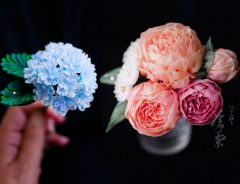
Japanese artist makes realistic flower ornaments from cloth with traditional craft technique
-
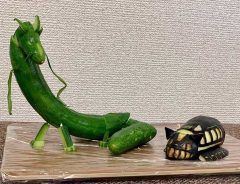
Twitter user crafts awesome Studio Ghibli spirit animals to carry ancestor’s spirits during Japan’s obon festival
-
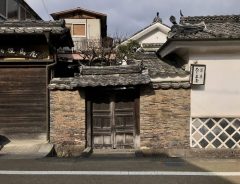
Going Home For Obon: How COVID-19 Has Changed Everyone’s Plans


Obon Festival
Obon is a Japanese festival taking place in summer which fuses belief in ancestral spirits and Buddhism. The main purpose is to welcome and commemorate ancestral spirits. It is held during three days in the hottest months of the year, sometime between July and September, depending on the region, but most typically between August 13th and 15th.
The Bon Odori (Bon Dance) is probably the most famous aspect of the festival and one of the most prominent annual events and social occasions for many Japanese communities abroad. However, there are other aspects of Obon which are revealed through practices and customs.
"Spirit Animal" displays
One of these customs is the displaying of "spirit animals" in the home on a special altar. They are tasked with transporting ancestral spirits from the underworld to the homes of their families who welcome them there during the three days of Obon and then back again to the underworld once the festival has ended.
Traditionally, the animal charged with the first leg of the journey is the horse, called shōryōuma 精霊馬 (literally "spirit horse"). The idea was that a horse would be the fastest way to bring the ancestral spirits home to the families eager to see them. On the return journey, the spirits have accepted the food offerings left by the families, and are in no hurry to return, so the animal tasked with the journey is the much slower cow, called shōryōushi 精霊牛 (literally "spirit cow"), which will allow them to enjoy the scenery as they make their way home at a leisurely pace.
Since it would be too difficult to carve a horse and a cow every year, it is customary to choose a slim and swift-looking cucumber to symbolize the horse and a slow and heavy-looking eggplant to symbolize the cow. Moreover, cucumbers and eggplants are typical summer vegetables, so it's appropriate for the season. As you can see in the image below, the spirit animals are propped up on sticks. In modern times, these are made out of broken up disposable chopsticks or, for the smaller displays, toothpicks.
I, Katorisi / CC BY
Non-traditional "Spirit Animals"
While it's only natural that a horse and a cow were the methods of transportation which made sense to those who created this tradition centuries ago, the industrial revolution and technological advancements of the 20th century have created many other forms of transportation. Hence, it's not uncommon these days for families to take some liberties with the traditional design.
As in years past, Twitter users are showing off their handiwork this summer, including some interesting variations on the classic horse and cow model.
For example, Twitter user Aya (@kanzashi1616), a talented artist who creates gorgeous tsumami-zaiku floral hair ornaments out of crepe cloth such as those worn by geisha, posted an image of the display fashioned by her nieces. We can see that the horse and cow have been replaced with a jumbo jet and the Catbus from the famous Studio Ghibli film My Neighbor Totoro!
"Good morning. It's incredibly hot, isn't it... My nieces made spirit animals. Apparently, (their idea is) we'll have (our ancestors) quickly come home on an airplane, and enjoy the trip back in the Catbus :D My father is probably quite surprised to have been guided to an airport terminal lol"
By the way, if you're interested in having a beautiful order-made hair ornament such as the ones you can see below, Aya is open to commissions. You can also see more of her creations on her Twitter account.
Other examples
Here are some more examples of other non-standard "spirit animal" displays showing up on Twitter this year:
Motorcycle
A certain dog robot
Hare and tortoise | Jeep and Segway
When you're out of vegetables...
A Twitter moment for the displays has been trending and you'll also find others if you search with 精霊馬 shōryōuma.